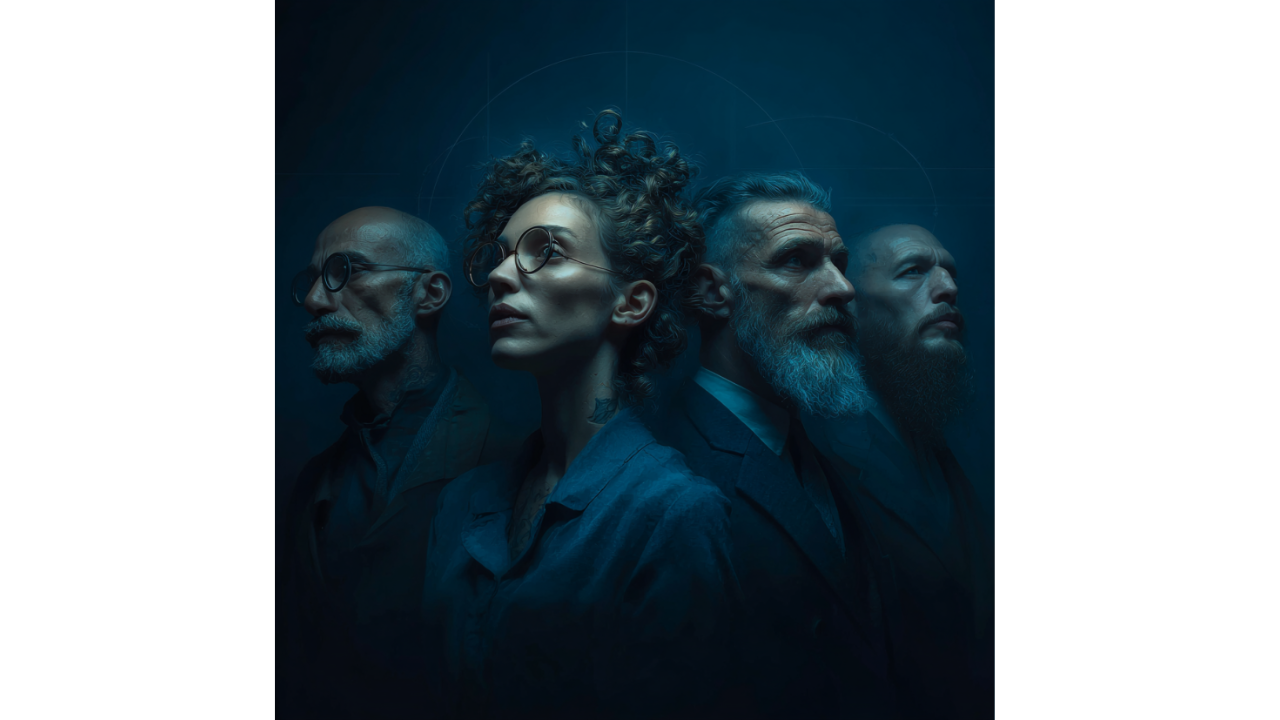Google Opens Gemini Deep Research to Developers
Google announced this week that Gemini Deep Research—its autonomous research agent—is now accessible to developers through the new Interactions API....

Google just dropped the productivity equivalent of a nuclear weapon, and most people are still using muskets.
NotebookLM's new Video Overviews feature transforms your messy research notes, PDFs, and images into narrated slideshows complete with visuals, charts, and quotes. But that's just the appetizer. Google simultaneously upgraded its entire AI ecosystem: Veo 3 and Veo 3 Fast are now fully available on Vertex AI for enterprise video generation, Search gained PDF and image context awareness with real-time camera queries, and Chrome added instant AI insights for any webpage.
This isn't incremental improvement. This is the moment when traditional research workflows become as obsolete as card catalogs.
Video Overviews represent the first visual format in NotebookLM's multimodal expansion strategy. The AI system generates new visuals while incorporating images, diagrams, quotes and numerical data from uploaded documents, creating what Google calls "expertly-crafted visual walkthroughs of the content you provide."
Here's what makes this different from every other AI tool: NotebookLM doesn't just summarize your research—it understands the relationships between your sources and creates coherent narratives across multiple media types. You can upload PDFs, research papers, meeting notes, and spreadsheets, then watch as the AI creates a professional presentation that pulls insights from all sources simultaneously.
The technology targets complex concepts requiring visual explanation, particularly data visualization, process demonstration and abstract concept clarification. As Shan Wang, Senior UX Designer at Google, explained, the feature functions as "a visual alternative to Audio Overviews" that makes abstract concepts more tangible through intelligent visual synthesis.
The broader context shows why this moment matters. Over 70% of marketers now rely on AI-driven solutions to streamline their workflows, while productivity gains from these tools have been reported as high as 40%. But NotebookLM's approach goes beyond simple automation—it's creating entirely new research methodologies.
The platform's evolution has been rapid and decisive. Featured notebooks launched in July 2025, providing professionally curated content from organizations like The Economist and Oxford University projects. NotebookLM Plus arrived in December 2024 with enhanced capacity limits and enterprise-grade features. Mobile applications launched in May 2025 with offline capabilities, showing Google's commitment to making this a comprehensive research platform.
The competitive positioning is clear: while other AI tools focus on general-purpose assistance, NotebookLM emphasizes source-grounded responses and citation accuracy. This approach addresses the fundamental problem with most AI research tools—they generate plausible-sounding content without reliable sourcing.
Google redesigned NotebookLM's Studio panel to support multiple outputs of the same type within a single notebook. Previously, users could create only one Audio Overview, Mind Map, or Study Guide per notebook. Now, you see four distinct tiles for creating Audio Overviews, Video Overviews, Mind Maps, and Reports with a single click.
This unlocks exponential productivity gains. Teams can create role-specific Audio and Video Overviews from shared documentation. Content creators can generate Audio Overviews in multiple languages for global accessibility. Students can create chapter-specific Mind Maps or Video Overviews for comprehensive exam preparation.
The redesigned Studio panel supports simultaneous activities—users can listen to an Audio Overview while exploring a Mind Map or reviewing a Study Guide, enabling more efficient information processing. This represents a fundamental shift from linear research workflows to parallel, multimedia information synthesis.
Google's Veo 3
and Veo 3 Fast models are now fully available on Vertex AI, giving enterprises high-definition video generation with native audio, precise lip-sync, and multilingual support. In August, both models will add image-to-video generation, turning static visuals into 8-second animated clips from simple text prompts.
Early adopters like Canva and eToro are using Veo to speed production, localize ads, and create cinematic content at scale—secured with SynthID watermarking and covered by Google's AI indemnity. This isn't just another AI video tool; it's enterprise-grade content creation that integrates seamlessly with Google's research ecosystem.
The implications cascade through entire business workflows. Research teams can now generate professional video presentations from their NotebookLM insights, create animated explanations of complex data, and produce localized content for global markets—all within Google's integrated ecosystem.
Google's AI Mode now accepts PDFs and images for context-aware answers, offers real-time camera-based queries via Search Live, and introduces Canvas to build living study plans that evolve across sessions. Chrome gains an "Ask Google about this page" shortcut for instant AI insights.
This represents a fundamental shift in how we interact with information. Instead of switching between research tools, document viewers, and search engines, users can now upload a PDF to Search, point their camera at a physical document, and get contextual answers that understand the relationships between multiple information sources.
The Canvas feature creates persistent research workspaces that evolve across sessions, enabling long-term research projects that maintain context and build knowledge over time. This addresses one of the biggest limitations of current AI tools—the inability to maintain research continuity across multiple sessions.
Video Overviews are rolling out to all NotebookLM users in English, with additional language support planned for future releases. This isn't a premium feature locked behind paywalls—it's democratized access to professional-grade research presentation tools.
According to recent studies, multimodal AI advances in 2025 transform content creation, particularly video, with tools seamlessly blending text, images, and audio. Independent creators can now produce professional projects that previously required entire teams and significant budgets.
The broader AI productivity tools market shows why this matters: AI tools fall into categories like assistants (ChatGPT, Claude), video generation (Synthesia, Veo), image creation (Midjourney, GPT-4o), automation, and research (NotebookLM, Deep Research). NotebookLM's unique positioning combines multiple categories into a unified research platform.
Google's approach differs fundamentally from competitors by creating an integrated ecosystem rather than standalone tools. NotebookLM connects with Google Drive for seamless file management, Chrome for instant webpage analysis, and Search for contextual information retrieval.
This integration creates network effects that compound productivity gains. Research conducted in Search can be instantly added to NotebookLM notebooks. Insights from NotebookLM can be incorporated into presentations created with Google's other tools. The entire research workflow becomes fluid rather than fragmented.
Claude 3.5, Gemini 2.0 Flash, Llama 3.3, Phi-4, and OpenAI's model o1 all gained multimodal capabilities, incorporating text, audio, and images. But Google's advantage lies in ecosystem integration rather than just model capabilities.
Video Overviews
represent just the beginning of Google's multimodal research vision. The company indicated plans for format expansion beyond narrated slides, suggesting presentations, interactive content, and specialized industry templates.
Future development priorities include additional Video Overview formats and deeper personalization capabilities. The roadmap aligns with enterprise customer requirements for diverse content creation capabilities within unified research environments.
The competitive landscape shows the urgency: tools like Perplexity offer deep research analysis, while specialized platforms focus on academic search or scientific summaries. But Google's integrated approach—combining search, document analysis, video generation, and collaborative tools—creates a research environment that's greater than the sum of its parts.
Google didn't just add a feature to NotebookLM—they created a new category of research tool that makes traditional approaches look primitive. When you can upload research documents, generate professional video presentations, conduct multimodal searches, and collaborate across an integrated ecosystem, every other research workflow becomes unnecessarily complicated.
The Video Overviews feature creates narrated slides that combine visuals with spoken explanations while pulling in images, diagrams, quotes and numbers from uploaded documents. But the real power comes from the ecosystem integration: Chrome's instant AI insights, Search's multimodal capabilities, and Veo's enterprise video generation working together seamlessly.
We're not just seeing better research tools—we're witnessing the emergence of AI-augmented intelligence that amplifies human research capabilities exponentially. The question isn't whether your competitors will adopt these tools. The question is whether you'll adapt fast enough to stay relevant.
The research revolution isn't coming. It's here, and Google just handed everyone the weapons.
Ready to weaponize your research and content creation before your competitors do? Winsome Marketing's growth experts help forward-thinking companies navigate the multimodal AI revolution, identifying opportunities where integrated AI ecosystems create sustainable competitive advantages. Let's build your research superpowers.

Google announced this week that Gemini Deep Research—its autonomous research agent—is now accessible to developers through the new Interactions API....

Google is quietly connecting two of its most powerful AI tools, and the implications for knowledge workers are significant.

We've watched Google chase OpenAI's shadow for two years now. Each announcement arrives with carefully managed expectations, each demo polished to...